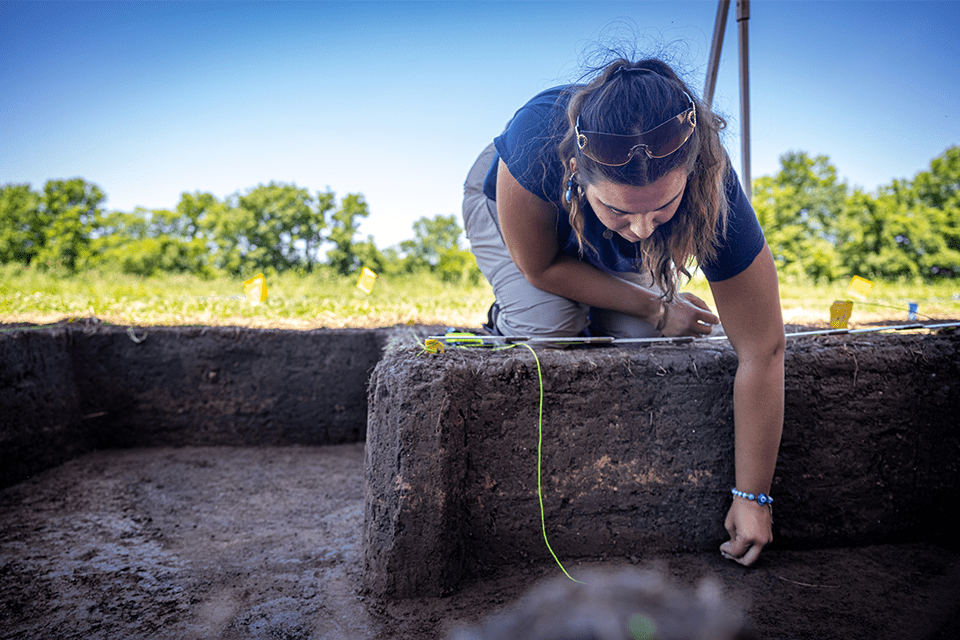It’s one thing to read about an ancient civilization in the history books, but it’s
a completely different matter when you hold that history in your hands.
For four weeks this summer, students traveled from campus to the western periphery
of Cahokia Mounds excavating multiple areas and making exciting discoveries. This
year’s excavations found multiple drill bits, microdrills, pottery sherds, and more.
Photo by Sarah Conroy
Saint Louis University students, along with SLU faculty, volunteers and visiting students
from universities across the country, got a chance to unearth history this summer
at archaeological excavations at Cahokia Mounds State Historic Site in Collinsville,
Illinois.
For four weeks this summer, students traveled from campus to the western periphery
of Cahokia Mounds, excavating multiple areas and making exciting discoveries. Cahokia
Mounds is a prehistoric American Indian chiefdom dating from A.D. 1050 – 1350. During
its height, perhaps 10,000 - 20,000 people lived in the city, where approximately
120 mounds existed, the largest of which is known as Monk’s Mound. The site is the
largest and most complex prehistoric chiefdom north of Mexico.
“This area of the site is intriguing, because we think that it may be a civic ceremonial
area attached to the chiefdom,” said Mary Vermilion, Ph.D., associate professor of
sociology and anthropology at Saint Louis University. “When we first came to the site,
the first structure we found had quite a few microdrills. Then a few years later,
we found a sweat lodge. So with each dig, whenever we answer one question, 20 more
pop up. Cahokia is an incredible investigative tool for not just what happened in
prehistory, but how that applies to today's world, and we’re happy to do our part
to try and answer that question, even as more questions pop up along the way.”
Under the supervision of Vermilion, students plotted the excavation sites, ensuring
an accurate record-keeping of anything discovered in the dirt. When an artifact is
found, it is photographed and logged, and then placed in a container to later be cleaned
and recorded in the lab. This year’s excavations found multiple drill bits, microdrills,
pottery sherds, and more. The group also found differentiating soil types, possibly
pointing to multiple structures being built in the same spot, one over another.

Students excavate the ground on the Cahokia Mounds Historic Site on June 11, 2024,
during an archeology dig that discovered ancient pottery, micro drills, and structures.
Photo by Sarah Conroy.
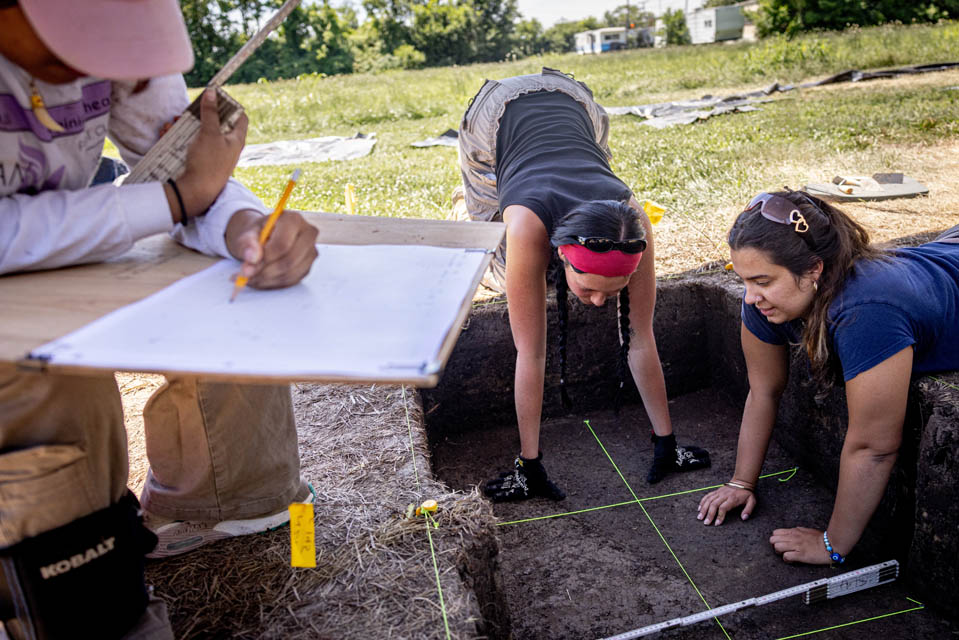
Students excavate and map units on the Cahokia Mounds Historic Site on June 11, 2024,
during an archeology dig that discovered ancient pottery, micro drills, and structures.
Photo by Sarah Conroy.
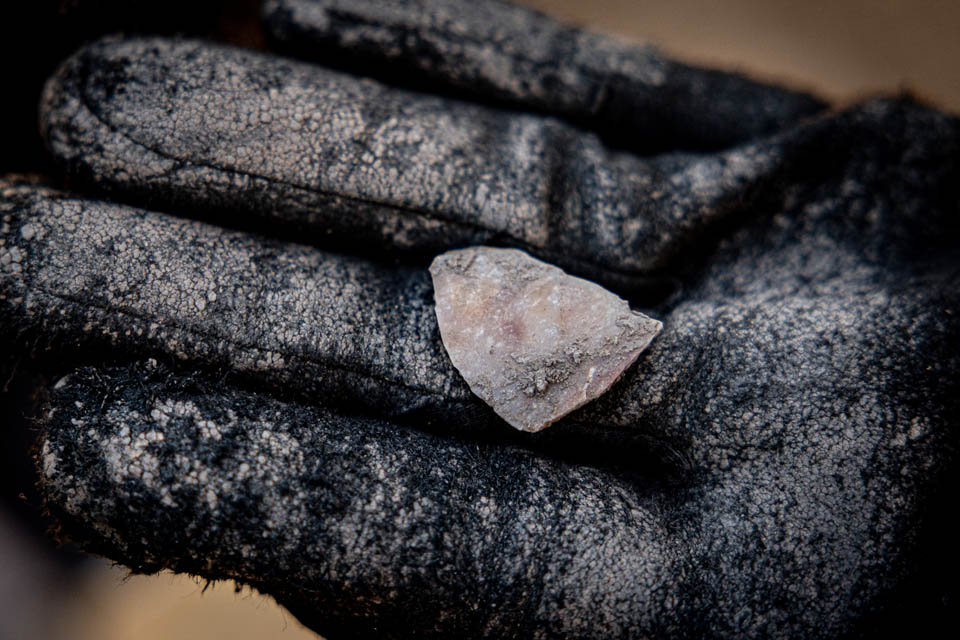
Students excavate the ground on the Cahokia Mounds Historic Site on June 11, 2024,
during an archeology dig that discovered ancient pottery, micro drills, and structures.
Photo by Sarah Conroy.
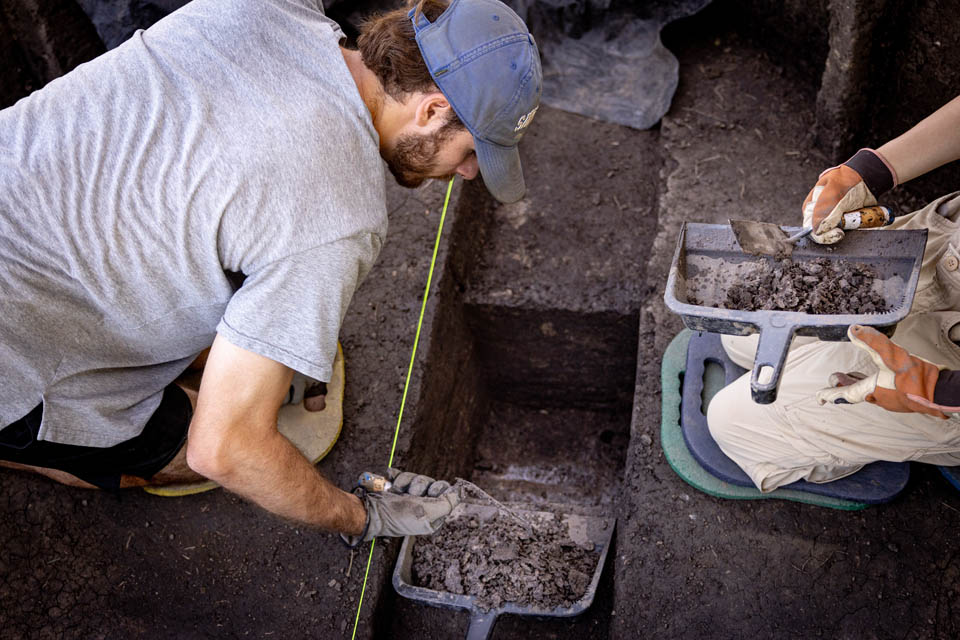
Students excavate the ground on the Cahokia Mounds Historic Site on June 11, 2024,
during an archeology dig that discovered ancient pottery, micro drills, and structures.
Photo by Sarah Conroy.
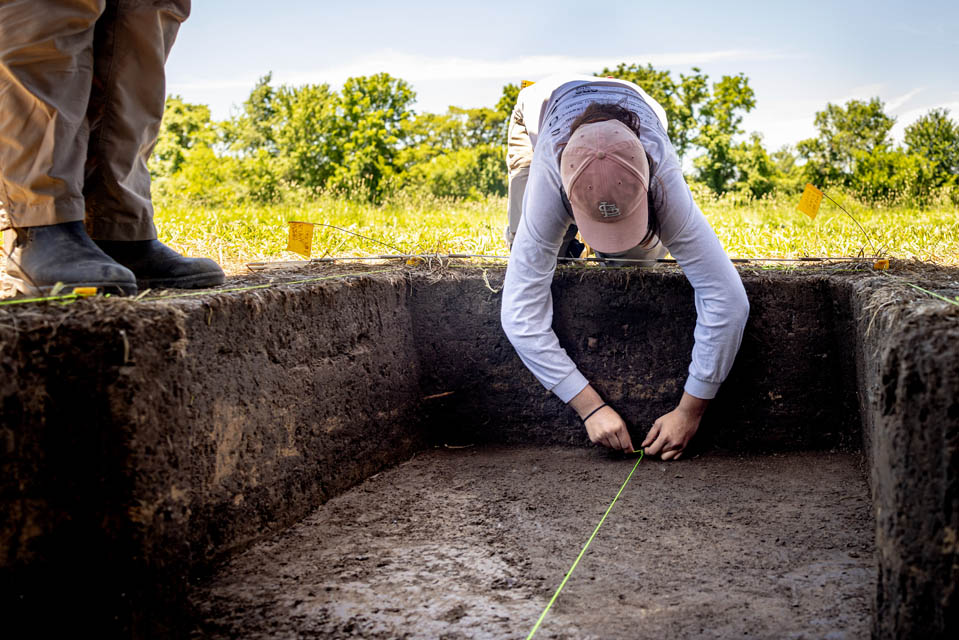
Students map the ground on the Cahokia Mounds Historic Site on June 11, 2024, during
an archeology dig that discovered ancient pottery, micro drills, and structures. Photo
by Sarah Conroy.
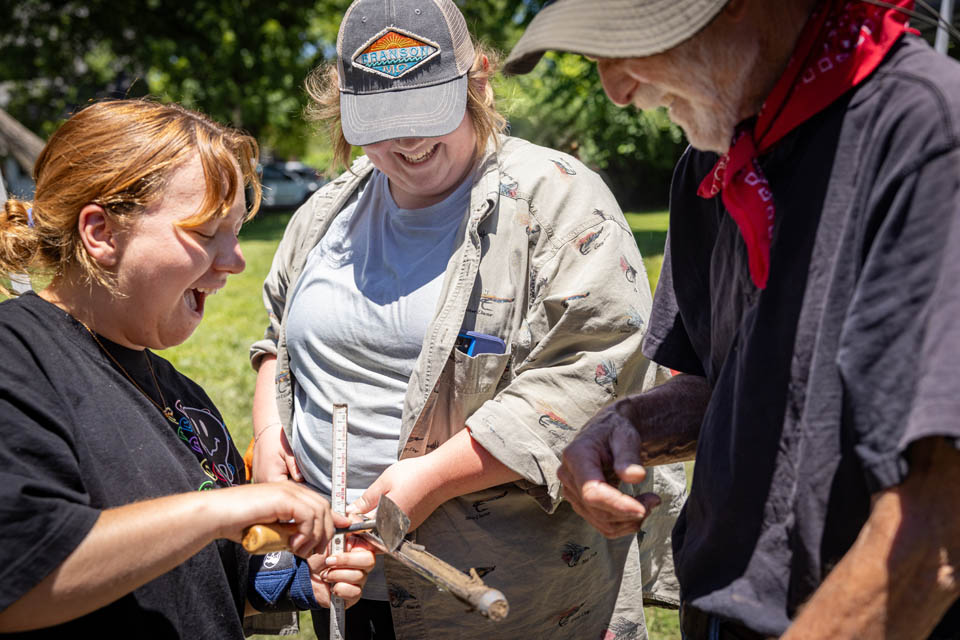
Students excavate the ground on the Cahokia Mounds Historic Site on June 11, 2024,
during an archeology dig that discovered ancient pottery, micro drills, and structures.
Photo by Sarah Conroy.
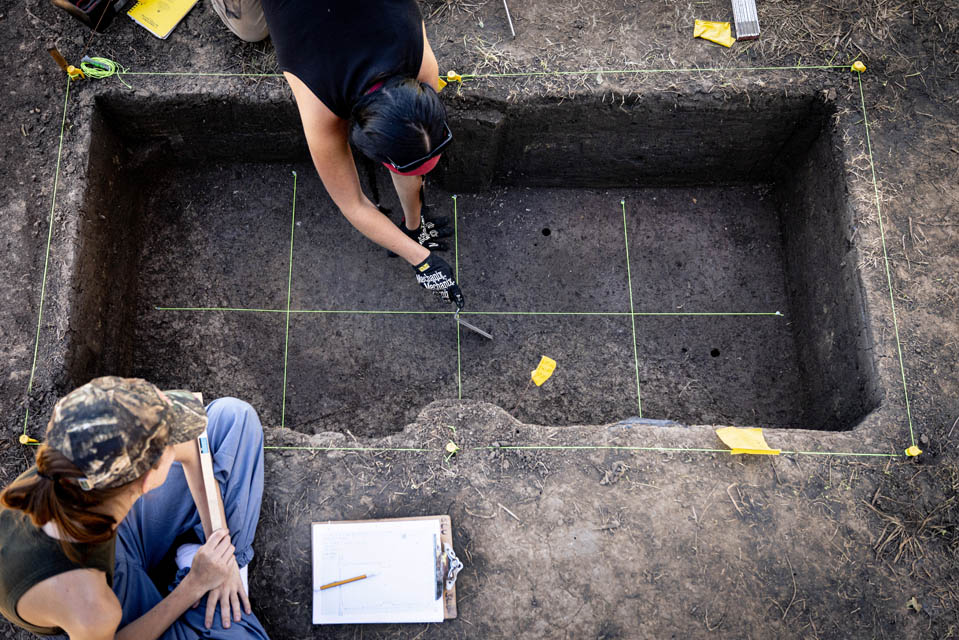
Students excavate the ground on the Cahokia Mounds Historic Site on June 11, 2024,
during an archeology dig that discovered ancient pottery, micro drills, and structures.
Photo by Sarah Conroy.
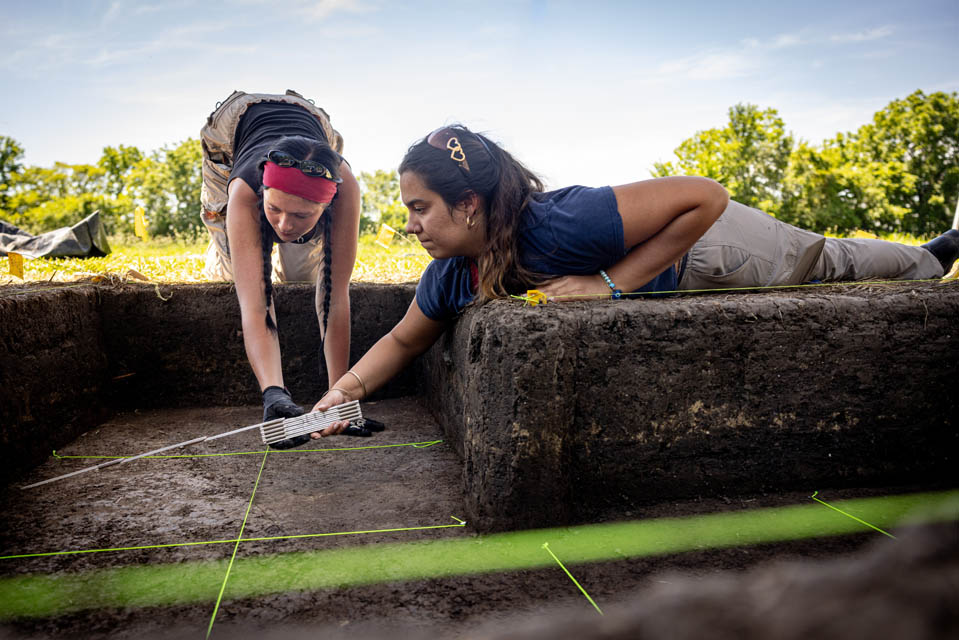
Students measure the ground on the Cahokia Mounds Historic Site on June 11, 2024,
during an archeology dig that discovered ancient pottery, micro drills, and structures.
Photo by Sarah Conroy.
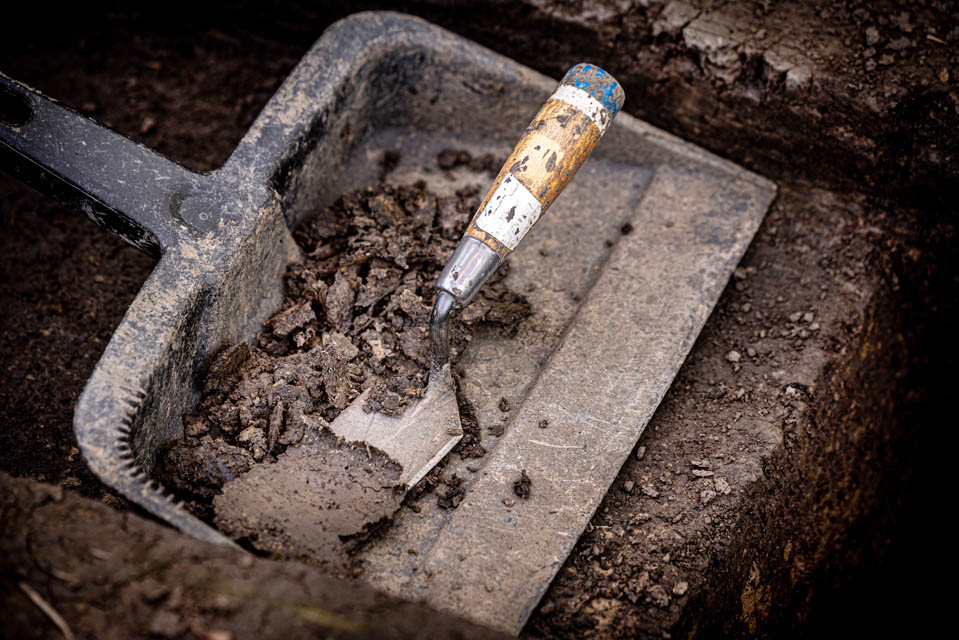
A trowel used on the Cahokia Mounds Historic Site as part of an archeology dig that
discovered ancient pottery, micro drills, and structures. Photo by Sarah Conroy.
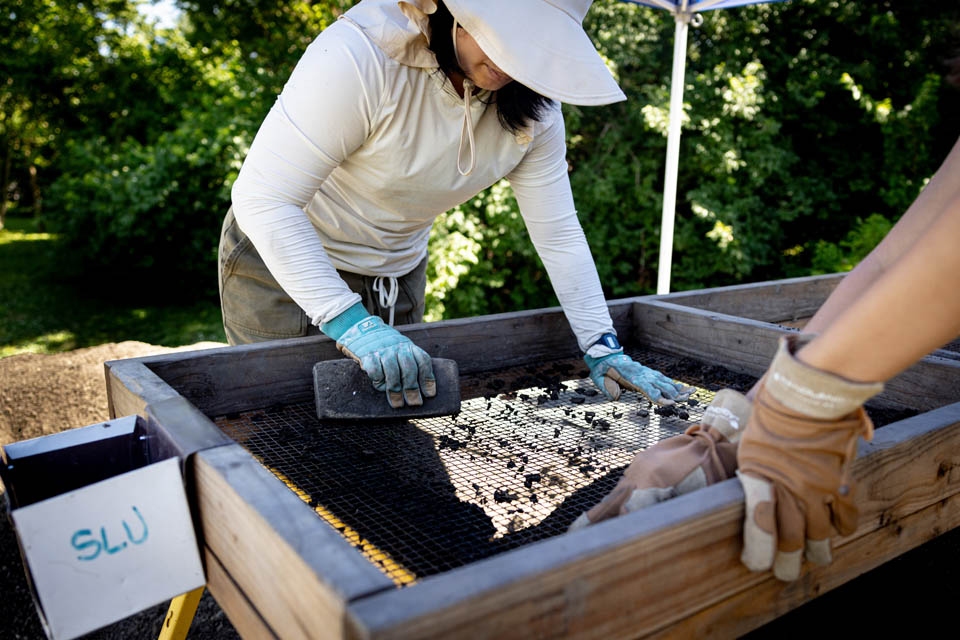
Students sift through the excavated ground on the Cahokia Mounds Historic Site on
June 11, 2024, during an archeology dig that discovered ancient pottery, micro drills,
and structures. Photo by Sarah Conroy.
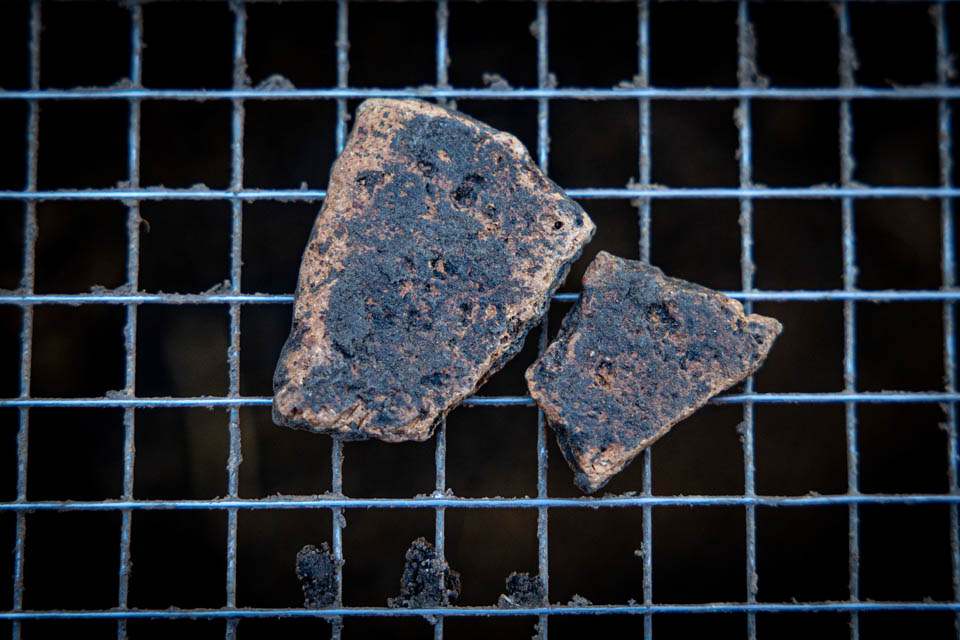
Artifacts found during the excavation of the Cahokia Mounds Historic Site as part
of an archeology dig that discovered ancient pottery, micro drills, and structures.
Photo by Sarah Conroy.
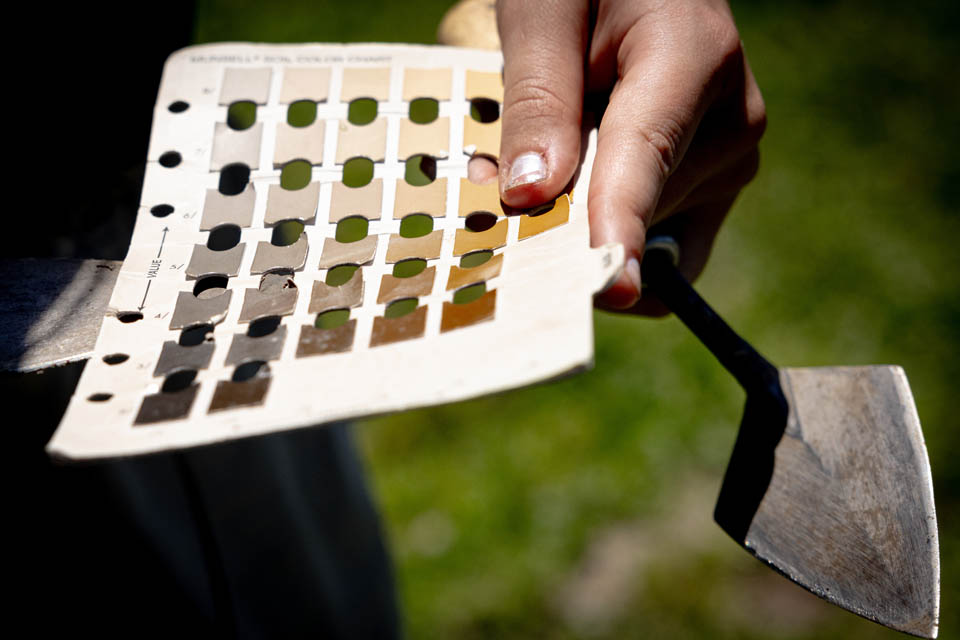
Students compare the color of excavated ground from the Cahokia Mounds Historic Site
to the Munsell Color System on June 11, 2024, during an archeology dig that discovered
ancient pottery, micro drills, and structures. Photo by Sarah Conroy.
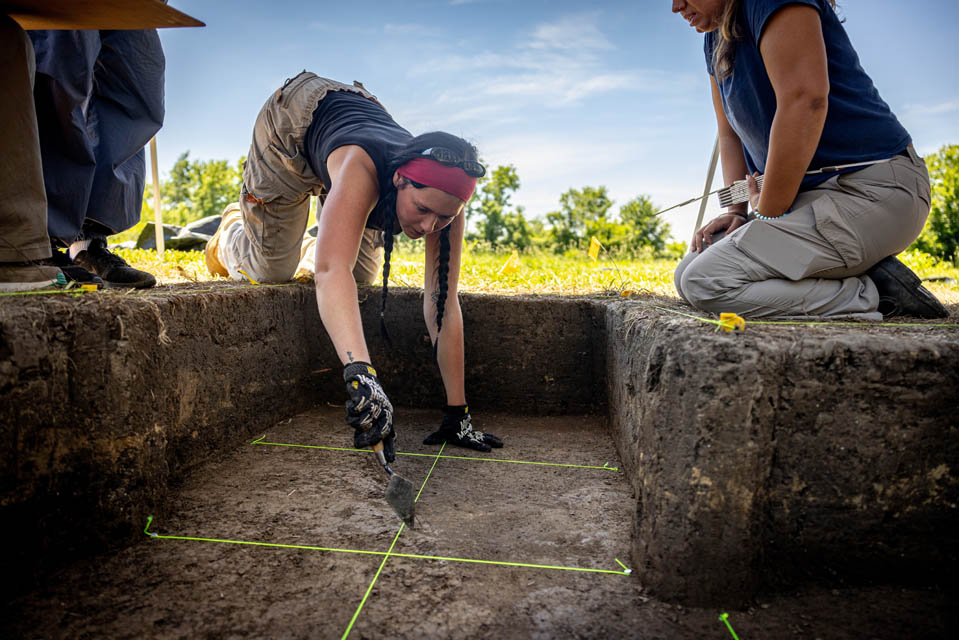
Students map the ground on the Cahokia Mounds Historic Site on June 11, 2024, during
an archeology dig that discovered ancient pottery, micro drills, and structures. Photo
by Sarah Conroy.
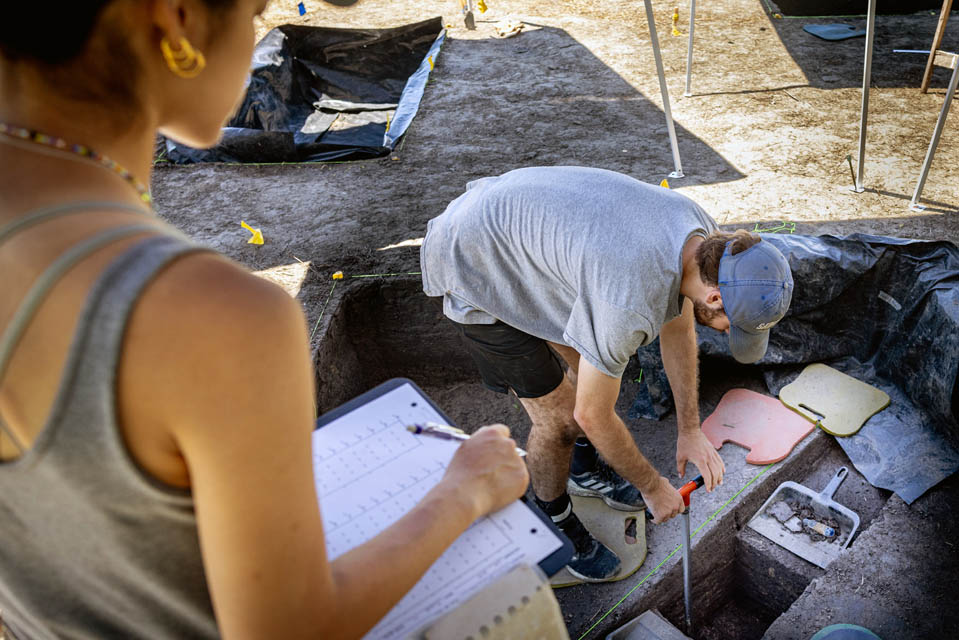
Students excavate and map the ground on the Cahokia Mounds Historic Site on June 11,
2024, during an archeology dig that discovered ancient pottery, micro drills, and
structures. Photo by Sarah Conroy.
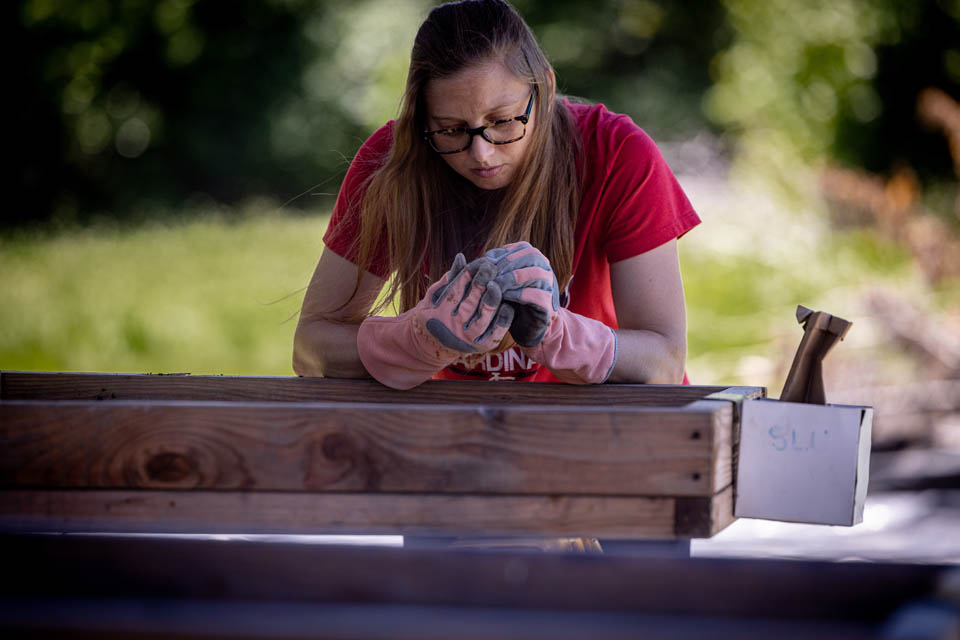
Students sift through excavated ground on the Cahokia Mounds Historic Site on June
11, 2024, during an archeology dig that discovered ancient pottery, micro drills,
and structures. Photo by Sarah Conroy.
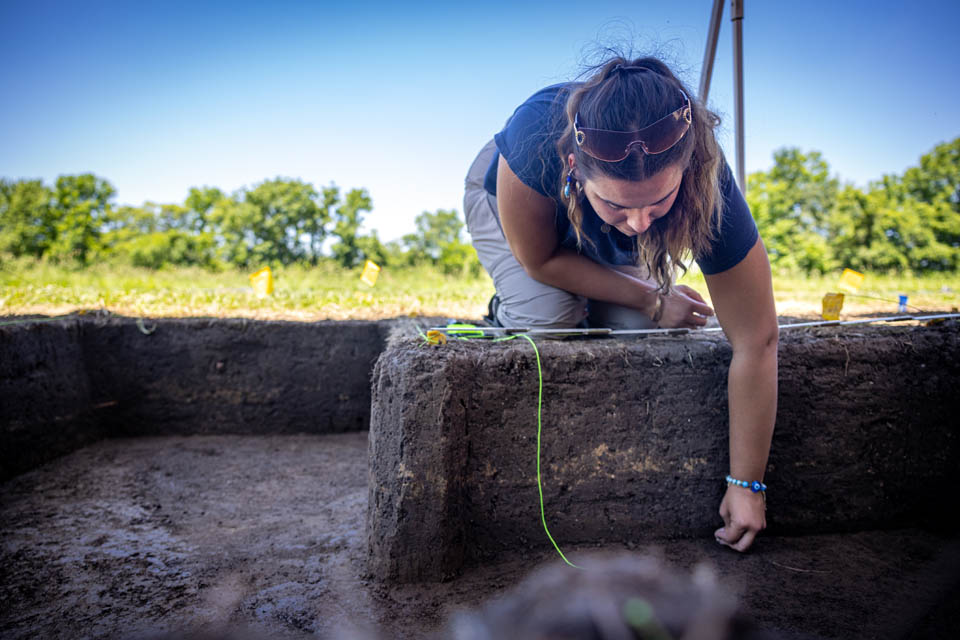
Students excavated the ground on the Cahokia Mounds Historic Site on June 11, 2024,
during an archeology dig that discovered ancient pottery, micro drills, and structures.
Photo by Sarah Conroy.
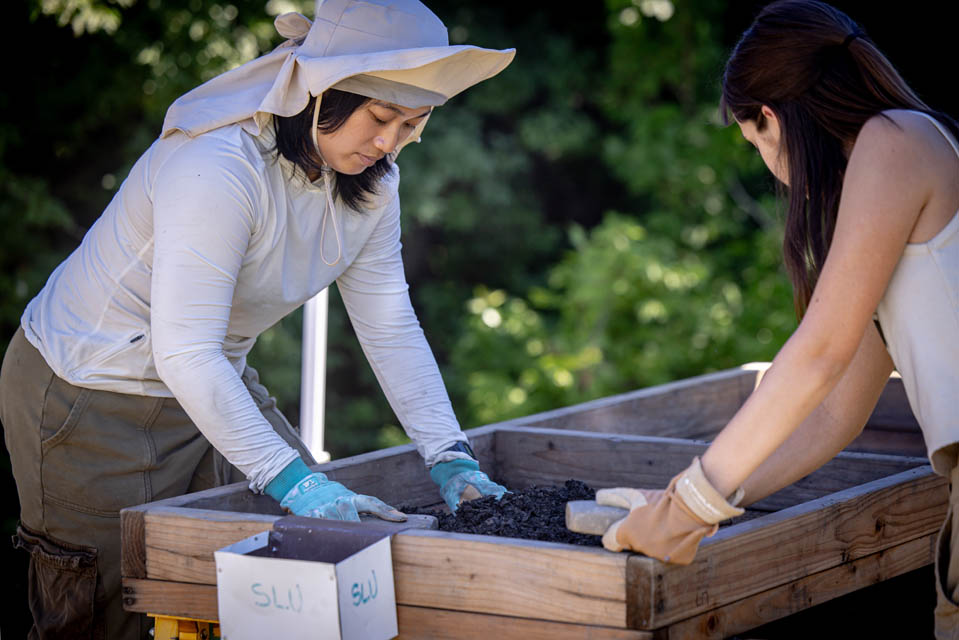
Students sift through excavated ground on the Cahokia Mounds Historic Site on June
11, 2024, during an archeology dig that discovered ancient pottery, micro drills,
and structures. Photo by Sarah Conroy.
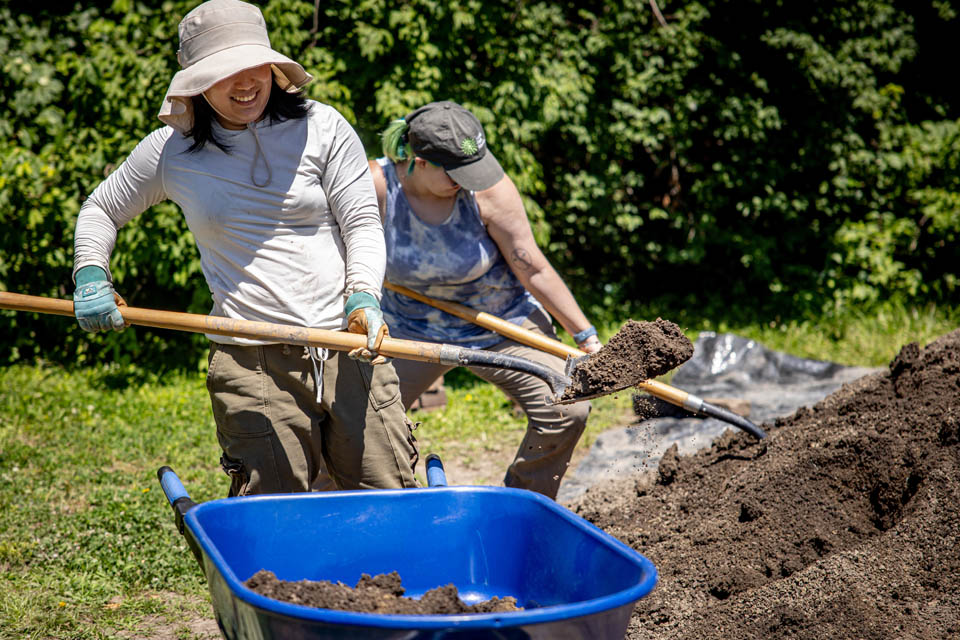
Students refill excavated sites on the Cahokia Mounds Historic Site on June 11, 2024,
during an archeology dig that discovered ancient pottery, micro drills, and structures.
Photo by Sarah Conroy.
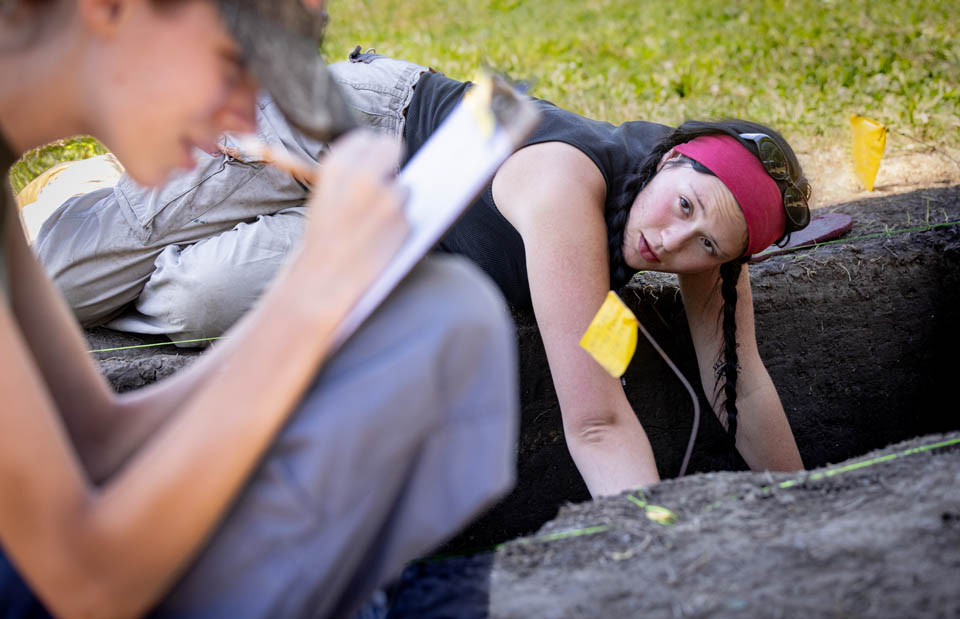
Students excavate the ground on the Cahokia Mounds Historic Site on June 11, 2024,
during an archeology dig that discovered ancient pottery, micro drills, and structures.
Photo by Sarah Conroy.
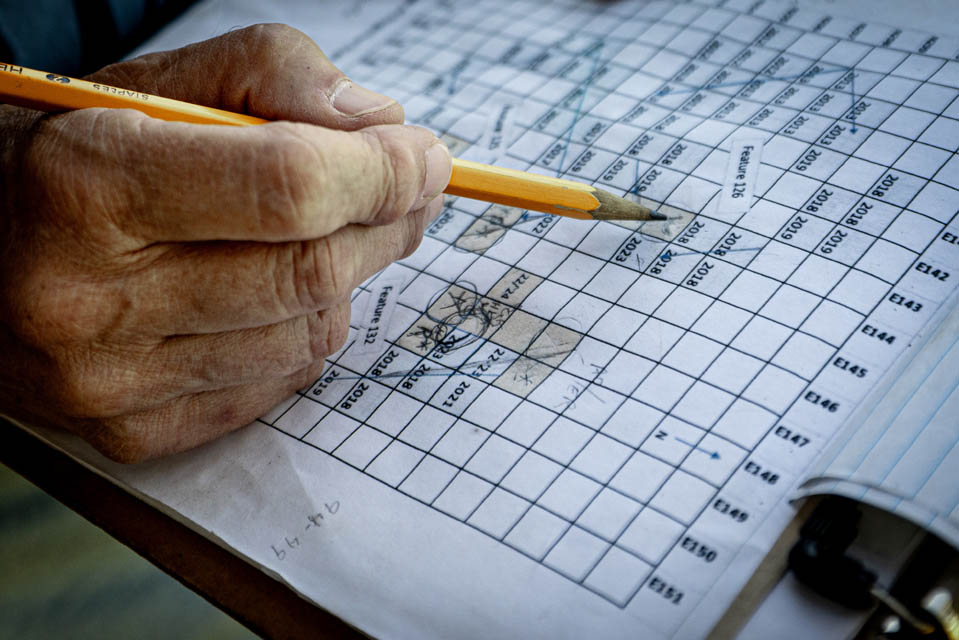
A map of the site on the Cahokia Mounds Historic Site on June 11, 2024, during an
archeology dig that discovered ancient pottery, micro drills, and structures. Photo
by Sarah Conroy.
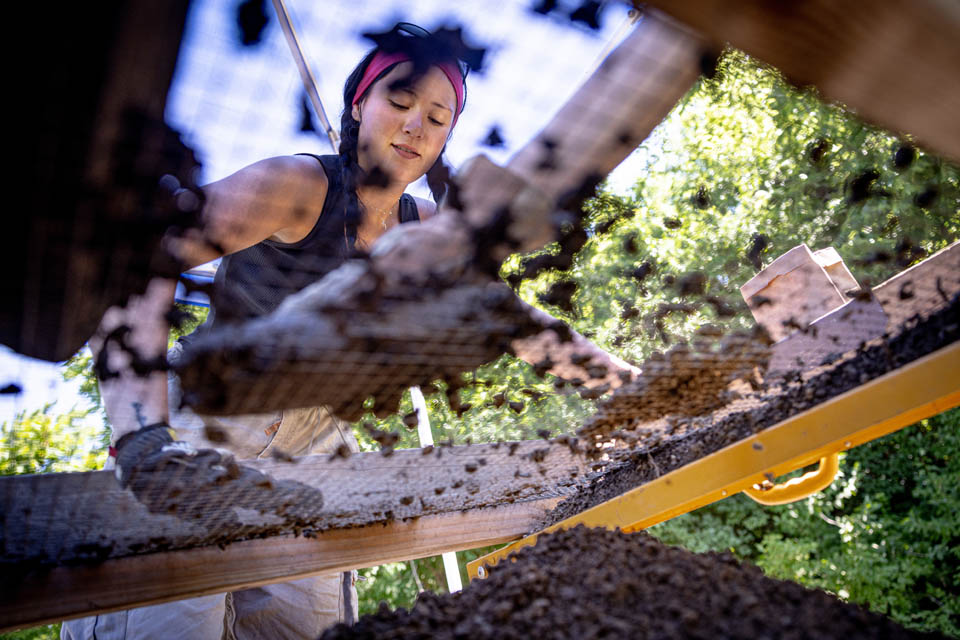
Students sift through excavated ground on the Cahokia Mounds Historic Site on June
11, 2024, during an archeology dig that discovered ancient pottery, micro drills,
and structures. Photo by Sarah Conroy.
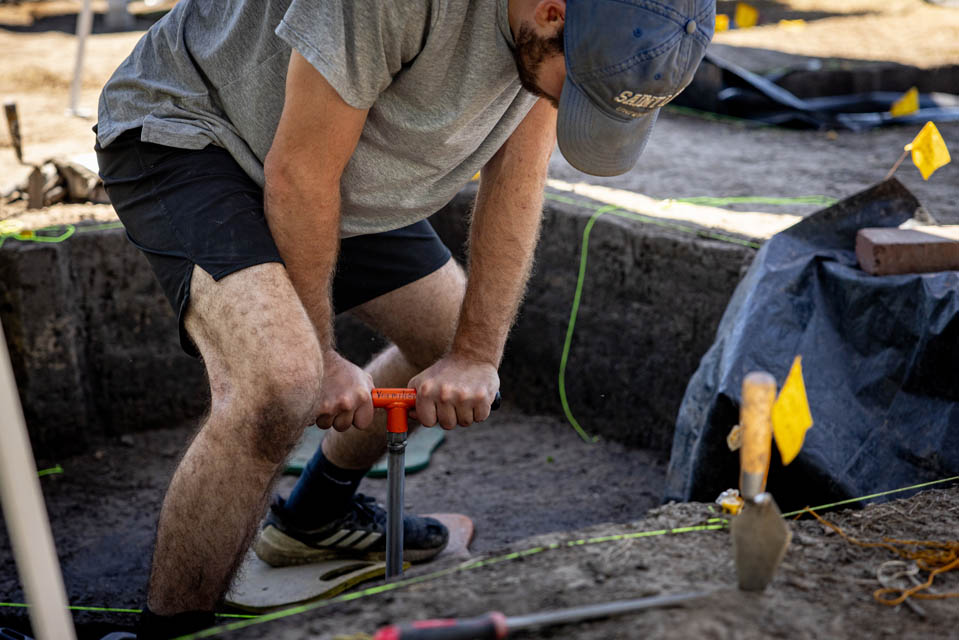
Students excavate the ground on the Cahokia Mounds Historic Site on June 11, 2024,
during an archeology dig that discovered ancient pottery, micro drills, and structures.
Photo by Sarah Conroy.
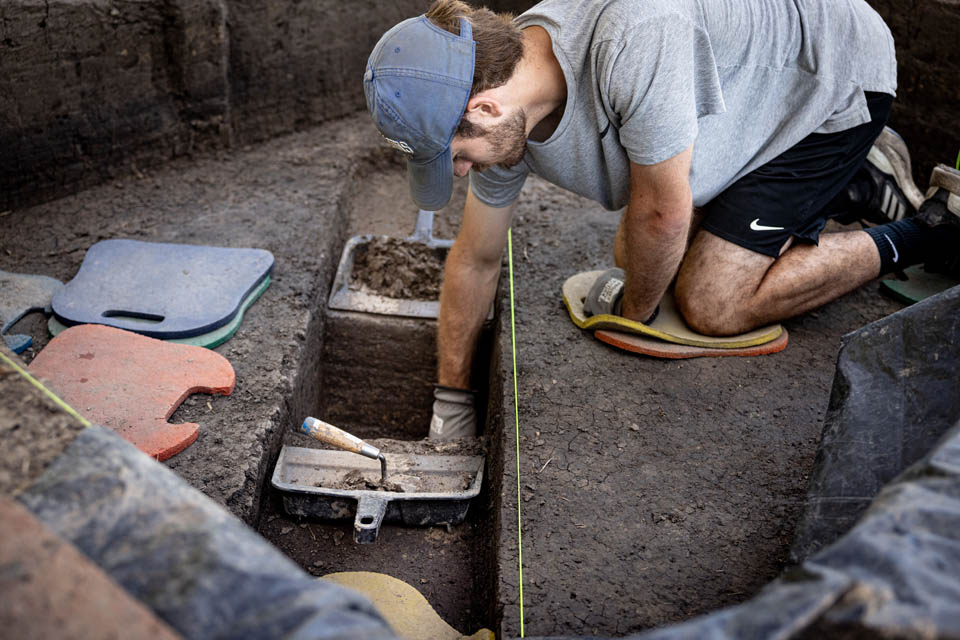
Students excavate the ground on the Cahokia Mounds Historic Site on June 11, 2024,
during an archeology dig that discovered ancient pottery, micro drills, and structures.
Photo by Sarah Conroy.
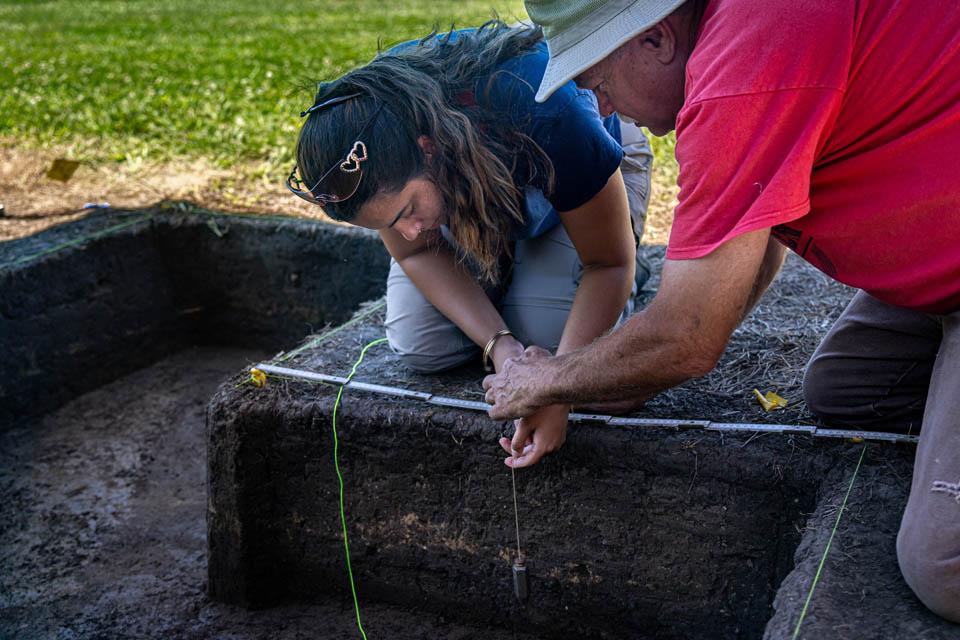
Students excavate and map units on the Cahokia Mounds Historic Site on June 11, 2024,
during an archeology dig that discovered ancient pottery, micro drills, and structures.
Photo by Sarah Conroy.
This year’s excavations continue a tradition of SLU students breathing life back into
an ancient civilization more than 1,000 years old and just minutes away from campus.
Brittany Murray, an archaeological SLU student from the 2011 excavations, returned
to visit this summer and was brought right back to her days as an undergraduate.
“Ever since I was here in 2011, I have just loved being in the dirt,” Murray said.
“It’s fascinating and fun, and you get to see so many cool things. SLU is always really
good about providing research opportunities, community impact opportunities, they're
all about servant leadership, which is amazing. So getting out to be here at an archaeological
site that is so close to the university that you can go out and visit later in life
is just amazing. And it's a really unique opportunity.”
Following each dig, the students return to the lab to spend two weeks carefully cleaning
and cataloging each artifact recovered. The artifacts are analyzed and interpreted,
and all records are complied, adding to the growing body of knowledge found throughout
the years at the dig site. Each year, the results are also distributed to various
research centers, for access by other researchers.
“I always tell students, ‘When you dig it, you destroy it’,” Vermilion said. “We have
to keep very precise records, because once the dirt is disturbed and that artifact
is removed, the context has been disturbed; it can never be the same again. So there
are notebooks after notebooks after notebooks and all kinds of papers on their clipboards,
all about what we’ve found. They keep journals for everything that they do. It’s a
huge learning curve, but usually, by the end of the first week, they're operating
like professionals. And that’s the point, we want them to get experience and do real
archaeological work, because just like these artifacts, that knowledge is invaluable.”
For those within the archaeological and greater St. Louis community, continuing to
learn about Cahokia and the pre-colonial history of the country is vitally important.
“It is very unique,” Vermilion said. “There are lots of archaeological digs that are
done around the country. But Cahokia itself is such a unique site, and that presents
unique opportunities and challenges for us all. We’ve been coming out here for years,
it’s hot, it’s humid, but we love it.”


















